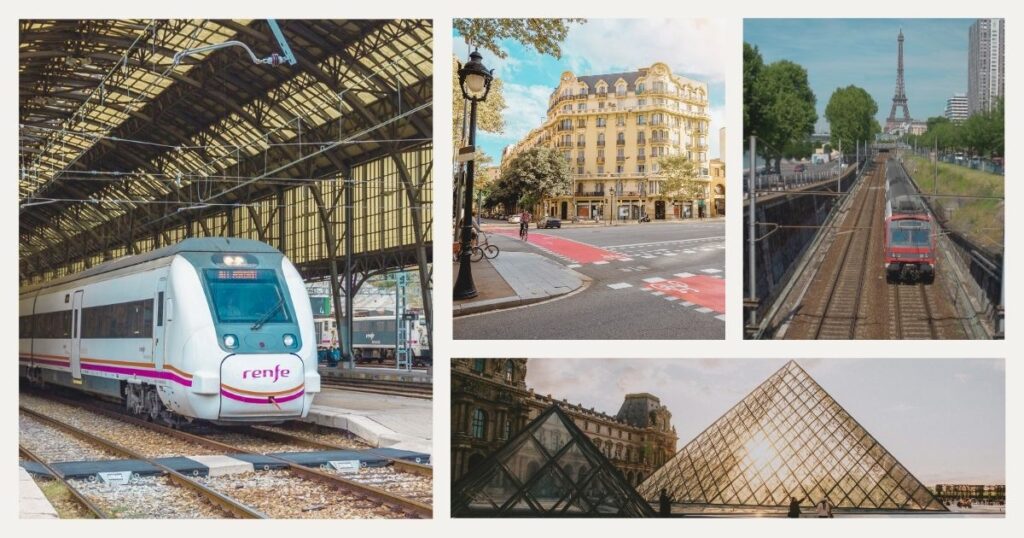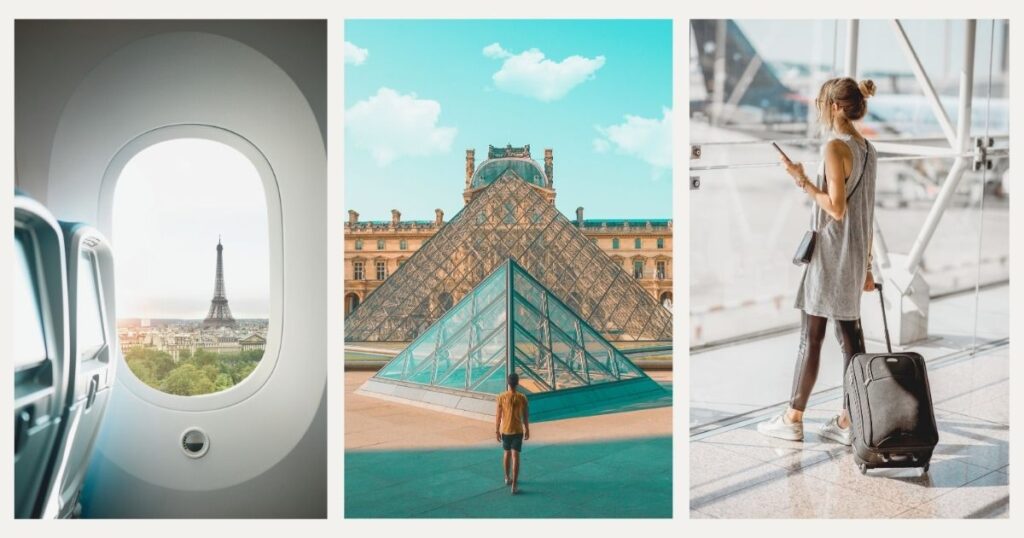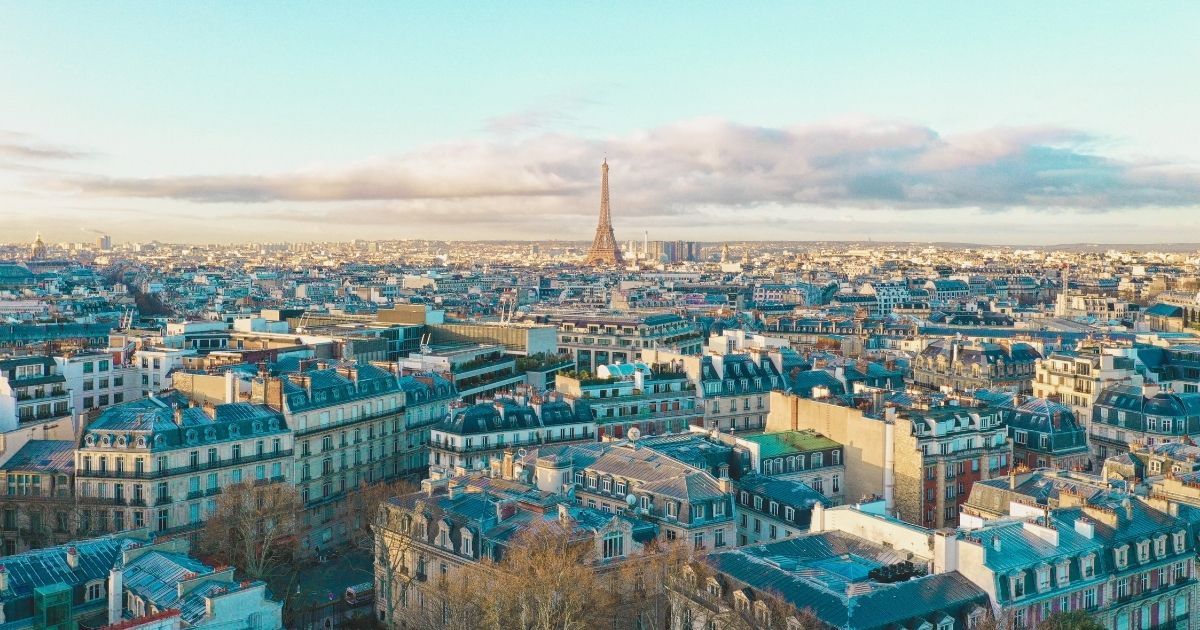Planning your journey and understanding how to get from Paris to Barcelona efficiently can significantly impact your travel experience, budget, and arrival condition for your Mediterranean digital nomad adventure. The route between these two vibrant European capitals offers multiple transportation options, each with distinct advantages depending on your priorities regarding cost, comfort, time, and environmental impact.
Digital nomads traveling between Paris and Barcelona face unique considerations including equipment transportation, work schedule flexibility, and budget optimization that influence the ideal travel method. This comprehensive guide examines every viable method for how to get from Paris to Barcelona, comparing high-speed trains, budget airlines, long-distance buses, and driving options while considering factors that matter most to location-independent professionals.
High-speed train: the premium travel experience

The high-speed train represents the most comfortable and environmentally sustainable option for how to get from Paris to Barcelona, though it requires one connection and represents a premium pricing choice. The journey combines France’s TGV network with Spain’s AVE system, providing a seamless and sophisticated travel experience.
The typical route involves taking a TGV from Paris Gare de Lyon to either Montpellier or Nîmes, then connecting to an AVE train that continues to Barcelona Sants station. Total journey time ranges from 6.5 to 8 hours, depending on connection timing, making it competitive with flight travel when considering airport transfer times.
🌟 Pro tip: book train tickets 3-4 months in advance for the best prices and seat selection. High-speed trains offer excellent WiFi and power outlets, making them ideal for digital nomads who want to work during travel time.
Pricing and luggage benefits
Train tickets typically cost €150-400, depending on booking timing, seat class, and seasonal demand. Advance booking through official railway websites often provides significant savings, with early bird discounts sometimes reaching 50% off standard fares.
The connection in southern France typically allows 30-60 minutes for transfer, which proves sufficient for experienced travelers. Both TGV and AVE systems maintain excellent punctuality records, reducing stress about missed connections when properly planned.
Luggage handling on trains accommodates digital nomads traveling with work equipment, offering overhead storage and dedicated luggage areas without weight restrictions or additional fees that complicate air travel with professional gear.
💡 Did you know? The train journey covers approximately 830 kilometers and showcases diverse European landscapes, from French vineyards through the Pyrenees mountains to Spanish Mediterranean coastlines.
Flight options: speed vs. cost considerations

Air travel offers the fastest option for how to get from Paris to Barcelona, with direct flights taking approximately 1 hour and 45 minutes. Multiple airlines serve this popular European route, ranging from full-service carriers to budget options that cater to different traveler priorities and budgets.
Budget airlines like Vueling, Ryanair, and easyJet provide the most economical flight options, with advance booking sometimes yielding fares under €50. However, these savings often come with restrictions on luggage, seat selection, and onboard services that may impact digital nomads traveling with work equipment.
Total journey time and equipment restrictions
How to get from Paris to Barcelona? While flight time remains short, total door-to-door travel time including airport transfers, security procedures, and potential delays often extends to 4-5 hours. Paris offers multiple airports (Charles de Gaulle, Orly, and Beauvais), while Barcelona flights typically arrive at Barcelona-El Prat Airport.
Airlines impose strict luggage restrictions that particularly impact digital nomads traveling with laptops, monitors, cameras, and other professional equipment. Budget carriers often charge €25-50 for checked luggage, while carry-on restrictions may require leaving essential work tools behind.
For reliable connectivity during your flight and immediate access upon arrival, consider Holafly’s seamless roaming solutions to maintain communication and access essential services without searching for WiFi or dealing with local SIM card purchases at Barcelona airport.
Full-service airlines like Air France, Iberia, or Lufthansa provide more generous luggage allowances and better protection for valuable equipment, though at higher base fares.
Bus travel: budget-friendly long-distance option
Long-distance bus services provide the most economical method for how to get from Paris to Barcelona, with companies like FlixBus offering direct routes starting around €25-40 for advance bookings. This option appeals primarily to budget-conscious digital nomads willing to trade comfort and time for significant cost savings.
The bus journey typically takes 12-15 hours, including rest stops and potential delays, making it unsuitable for travelers with tight schedules or those who prefer to arrive fresh and ready for work. However, overnight buses can serve as accommodation and transportation combined.
Comfort and practical benefits
Modern long-distance buses feature reclining seats, onboard WiFi, power outlets, and restroom facilities. However, the cramped conditions and frequent stops make sustained work difficult, limiting productivity during travel time.
Bus travel accommodates substantial luggage amounts without additional fees, making it attractive for digital nomads relocating with extensive equipment or personal belongings. Multiple departure times throughout the day offer scheduling flexibility, while last-minute booking remains affordable.
Digital nomads should realistically assess their ability to function professionally after overnight bus travel when planning important meetings upon arrival.
Driving: ultimate flexibility and scenic routes

Driving offers complete control over timing, routes, and stops, making it an attractive option for digital nomads who value flexibility and want to explore the French and Spanish countryside during their journey. The approximately 830-kilometer drive typically takes 8-10 hours, depending on route selection and traffic conditions.
Car rental costs vary significantly by season, typically ranging from €40-100 per day plus fuel, tolls, and insurance. For groups or nomads with substantial equipment, driving often provides better value than individual flight or train tickets while offering superior luggage capacity.
Routes and total costs
How to get from Paris to Barcelona by car? The primary route follows the A7 and A9 autoroutes through Lyon, Montpellier, and Perpignan before crossing into Spain via the AP-7 autopista. This highway route prioritizes speed and efficiency, reaching Barcelona in the minimum time with excellent rest area facilities.
French and Spanish toll roads charge approximately €60-80 for the complete journey, while fuel costs add another €80-120, depending on vehicle efficiency. Parking in Barcelona can be expensive and challenging, particularly in central areas where many digital nomads prefer to stay.
🌟 Pro tip: consider one-way car rentals if you don’t plan to return to Paris, though these often include drop-off fees. Some rental companies offer better rates for one-way international trips during peak season.
Comparing costs and making your decision
Understanding the complete cost structure for each transportation method helps digital nomads make informed decisions about how to get from Paris to Barcelona based on their specific circumstances, budgets, and priorities. Hidden costs and time values significantly impact the real comparison between options.
Budget airline flights may appear cheapest at €50-100, but additional costs for luggage, airport transfers, meals, and potential accommodation can easily double the total expense. Premium airlines cost €150-300 but include services that eliminate additional charges.
Time value and seasonal factors
Digital nomads should consider their hourly earning potential when evaluating transportation options, as time spent traveling represents potential lost income. A €200 train ticket that saves 6 hours compared to bus travel may provide excellent value for high-earning professionals.
The ability to work productively during travel adds value to train and some flight options, while bus travel generally prevents meaningful work accomplishment. This productivity factor significantly impacts the real cost comparison for professional travelers.
All transportation methods experience seasonal price fluctuations, with summer months commanding premium rates. Digital nomads with flexible schedules can achieve significant savings by traveling during shoulder seasons or avoiding French and Spanish holiday periods.
💡 Did you know? The route crosses two time zones during winter months due to different daylight saving time policies, though both cities observe the same time during summer, affecting scheduling for business calls upon arrival.
Practical travel tips for digital nomads

Successfully managing the journey requires attention to details that impact both travel experience and post-arrival productivity. Protecting valuable work equipment during transit requires careful packing strategies, regardless of transportation method.
Informing clients and colleagues about travel days and potential communication limitations prevents misunderstandings and maintains professional relationships. The journey may involve periods of limited connectivity or different time zones that affect scheduled calls or project deadlines.
Coordinating accommodation check-in times with arrival schedules prevents complications, particularly for late-arriving buses or flights that may arrive after standard reception hours. Planning work around travel schedules allows for rest and adjustment time upon arrival, ensuring professional performance doesn’t suffer from travel fatigue.
Final thoughts: choosing your ideal travel method
The best method for how to get from Paris to Barcelona depends entirely on your specific priorities, budget constraints, schedule flexibility, and comfort preferences. Each transportation option serves different traveler types and circumstances, with no universally superior choice for all digital nomads.
Budget-conscious nomads often prefer bus travel despite time costs, while professionals prioritizing comfort and productivity typically choose trains or premium flights. Those seeking adventure and flexibility may enjoy driving, particularly when traveling with substantial equipment.
Success in choosing the optimal transportation method requires honest assessment of your specific needs, realistic evaluation of total costs including hidden expenses, and consideration of how travel impacts your professional productivity and personal well-being upon arrival in Barcelona.
Ready to embark on your journey from Paris to Barcelona and continue your digital nomad adventure? Each transportation method offers unique advantages for different travel styles and budgets. For comprehensive guidance on making the most of your Barcelona experience once you arrive, explore our detailed Barcelona travel guide to help you settle into this vibrant Mediterranean destination seamlessly.
Let Nomada guide your journey to seamless European travel with practical insights and expert advice 🚄
👉 Start planning your perfect Paris to Barcelona journey today!
Frequently asked questions
Flying is fastest at 1 hour 45 minutes flight time, though total door-to-door time often reaches 4-5 hours including airport procedures and transfers. Direct flights operate multiple times daily from various Paris airports.
Value depends on your priorities. Buses cost least (€25-40) but take 12-15 hours. Trains offer good comfort-to-cost ratio (€150-400) with productive travel time. Budget flights can be economical (€50-100) but often include hidden costs.
Trains offer the best work environment with reliable WiFi, power outlets, and stable seating. Some flights provide WiFi for an additional fee. Bus WiFi is often unreliable, and driving prevents work entirely.
Book trains and flights 2-3 months ahead for the best prices and selection. Train prices increase significantly closer to departure dates. Budget flights may offer last-minute deals, while buses maintain stable pricing.
Trains have no weight limits and accommodate large items easily. Airlines impose strict restrictions with fees for excess weight. Buses allow generous luggage but offer limited security. Driving provides unlimited capacity.

